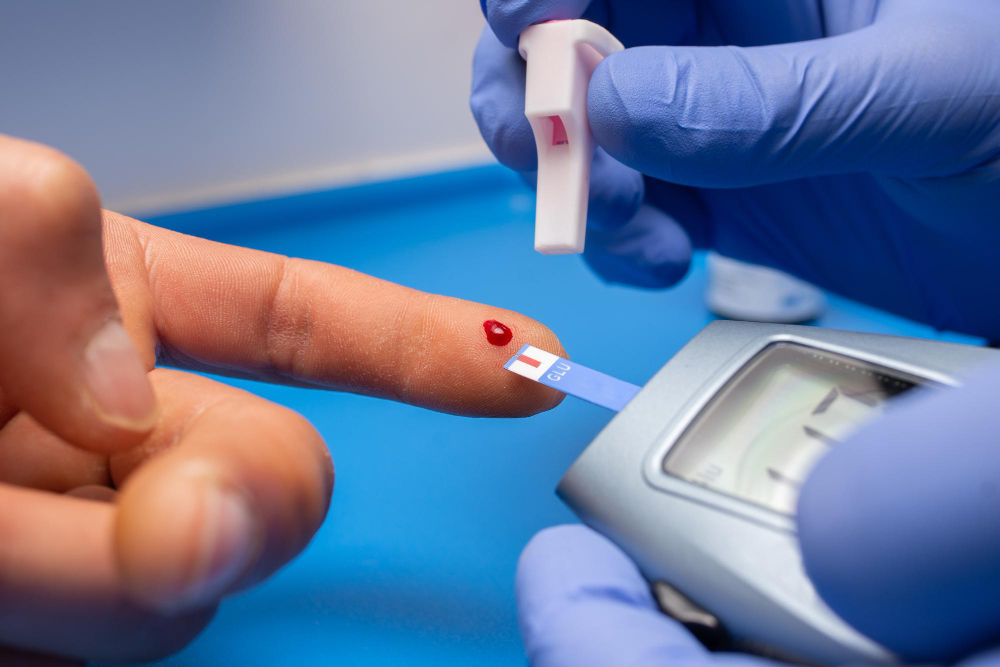Keeping track of our health is super important, and one way to do this is by checking our blood sugar. Sugar level tests help us see how our body handles sugar. Monitoring these levels keeps us alert to any changes. This is especially true for catching diabetes early. Not only that, these tests let us know if our body is working well or if something might be wrong. These small tests can be a great big window into understanding our health better and ensuring we stay fit.
Decoding Blood Sugar Tests: Types, Procedures, and More
There are different types of sugar level tests you should know about. These tests help find out how much sugar is in your blood and how well your blood sugar is being managed. Let’s dive into a few common ones:
- FBS (Fasting Blood Sugar) Test: This test measures blood sugar after a person has not eaten for at least 8 hours. It shows how much sugar is in your blood first thing in the morning.
- PPBS (Postprandial Blood Sugar) Test: Done 2 hours after eating, this test checks how well your body manages sugar levels after meals.
- A1C Test: This measures your average blood sugar over the last two to three months. It gives a broader picture than a single, one-time test.
- Glucose Random Test: This test can be done at any time of the day, showing real-time blood sugar levels.
Wondering what happens during these tests? Well, for most of them, a small sample of blood is taken from your fingertip or arm. It’s usually a quick and simple process. For the FBS test, remember to fast overnight.
When your test is underway, relax and focus on breathing deeply. Tests like the glucose random test require no special preparation, making them easier to get done without any hassle. For some, like the PPBS test, timing after meals is critical, so note when you have eaten.
Once the test is done, you can expect to hear back from your doctor or see the results online. At-home tests are also available. They come with easy instructions and are a flexible option if getting to a lab is tough.
In labs, professionals handle testing with precision, ensuring accurate results. If you choose at-home check-ups, follow guidelines provided with your kit. Keeping track of your test results is key to maintaining awareness of your health status.
Nothing beats the peace of mind that comes with knowing what your body is up to. Taking these blood sugar level tests and understanding how they work is a big step toward better health.
Understanding and Interpreting Your Results
First up, what do these blood sugar results even mean? Let’s unpack them:
- Normal Levels: A fasting sugar level of less than 100 mg/dL or a PPBS under 140 mg/dL is considered normal.
- Prediabetes: This is when your numbers are higher than normal but not high enough to be diabetes. It’s like a warning light, nudging you toward healthier choices.
- Diabetes: This happens when your fasting sugar is 126 mg/dL or higher, and the PPBS is over 200 mg/dL.
When your results come in, they can look confusing. Don’t worry—your doctor can help explain them. But here’s what’s important: lifestyle choices can make a big difference. What you eat, drink, and how often you move around can affect your sugar levels.
If your sugar level test results show prediabetes or diabetes, it’s crucial to get into action quickly. Start by chatting with your doctor about what steps to take next. They can offer advice tailored just for you and point you to resources that fit your lifestyle.
Your results also provide a peek into your health that goes beyond just numbers. They serve as a guide for modifying your lifestyle to suit your body’s needs. Everyone is different, and what works for one person might not work for another.
When you link blood sugar level test results with daily habits, it can lead to significant positive changes. Whether it’s eating more veggies or cutting down on sweets, small changes can have big impacts.
Your Path to Health: Managing and Monitoring Blood Sugar Levels
Keeping watch over your sugar level test results is vital. Here are some ways to manage those levels effectively:
- Diet: Eating more whole grains, vegetables, and lean proteins can help stabilize your blood sugar. Cut down on sugar-loaded snacks and drinks.
- Exercise: Regular physical activity, like walking or cycling, can lower your blood sugar levels.
- Medications: If necessary, your doctor might suggest medication to help manage your levels.
Remember, misconceptions about these tests can lead you astray. Not every high reading signals diabetes, and not all low readings mean you’re fine. Keep informed and focus on the facts.
Tracking your blood sugar levels regularly gives you a heads-up about your health status. Think of it as checking the fuel gauge on your health’s dashboard.
Simple food swaps can make a big difference too. Choosing water over soda or fruits instead of candies are small steps toward better blood sugar management.
Remember, managing your health is a journey. Each step, no matter how small, brings you closer to feeling your best. Regular check-ups and staying informed help you keep control of your health story.
